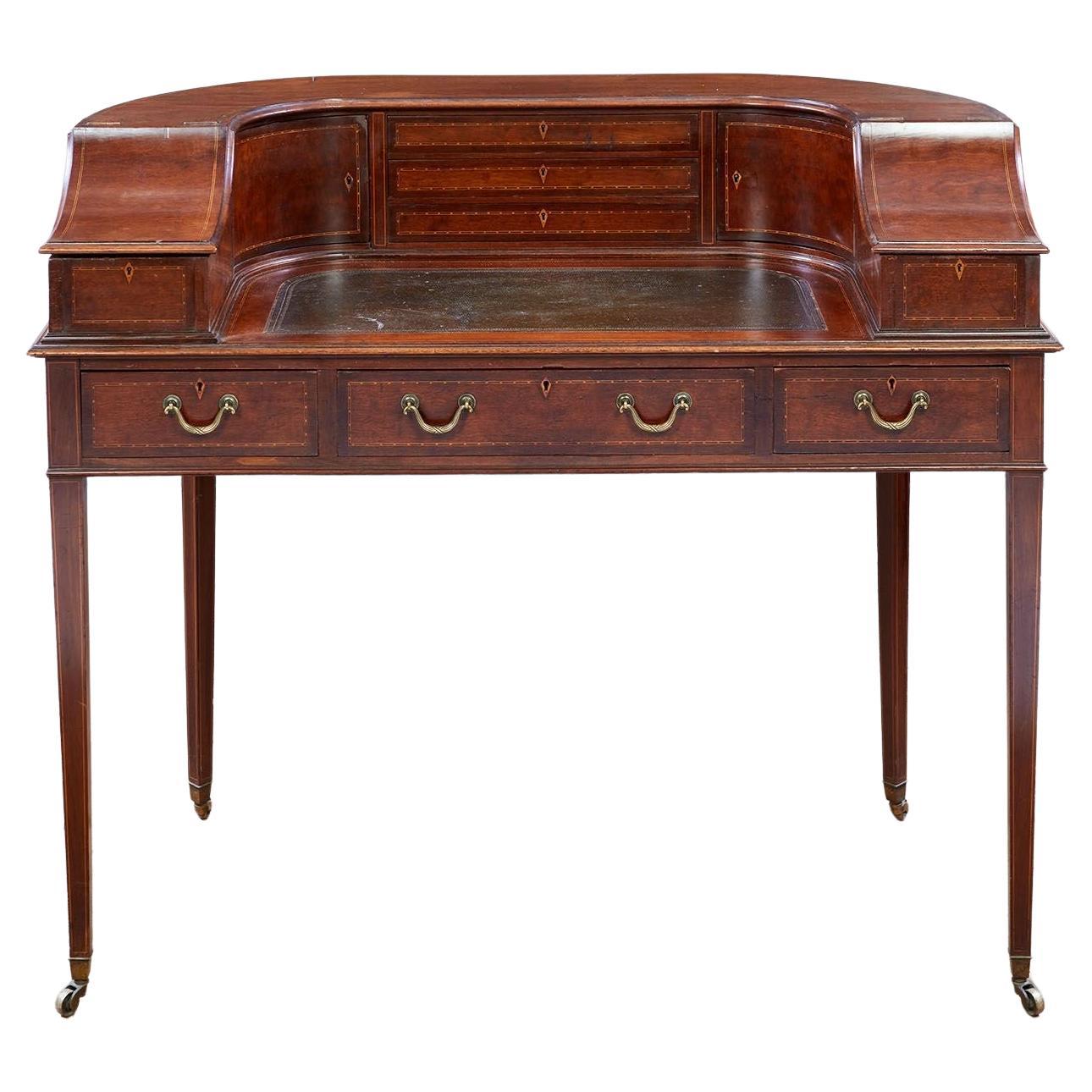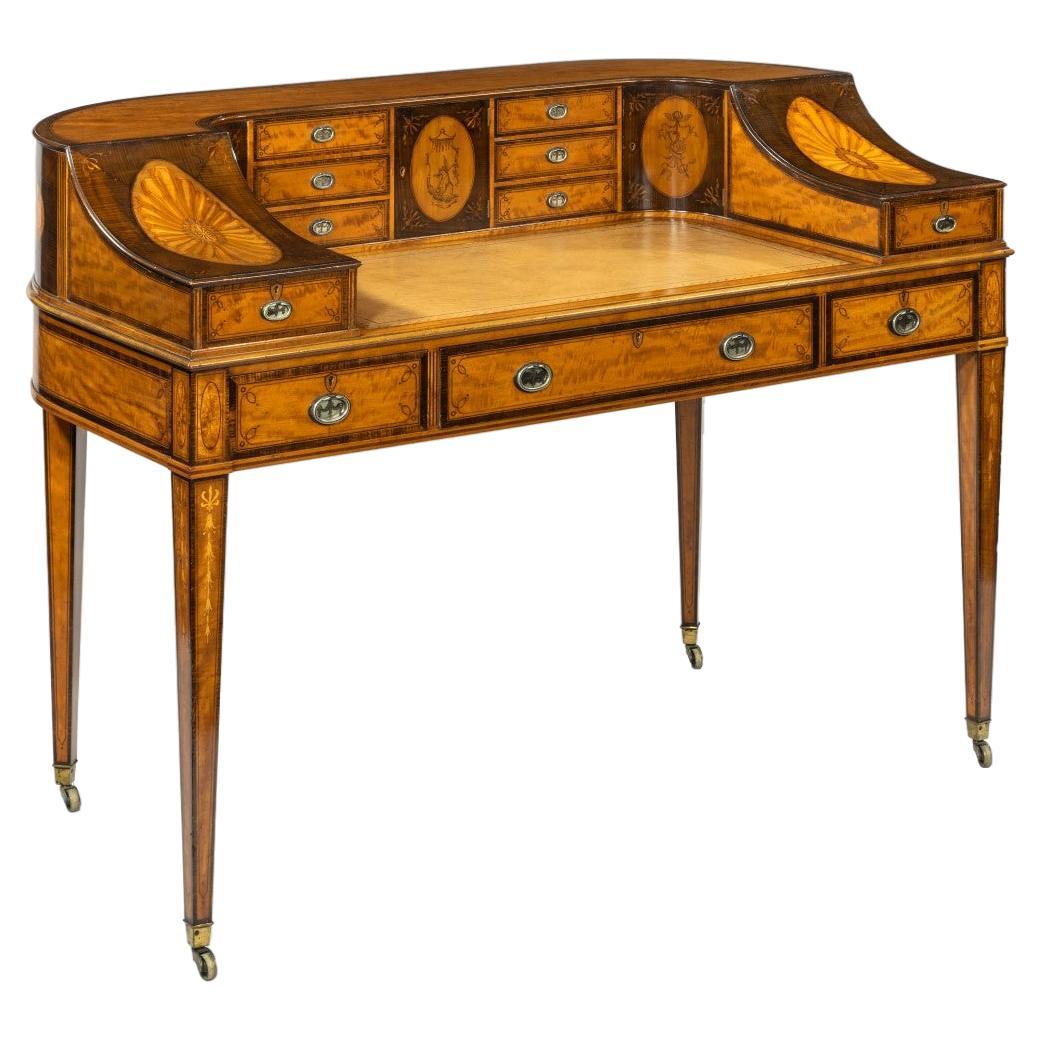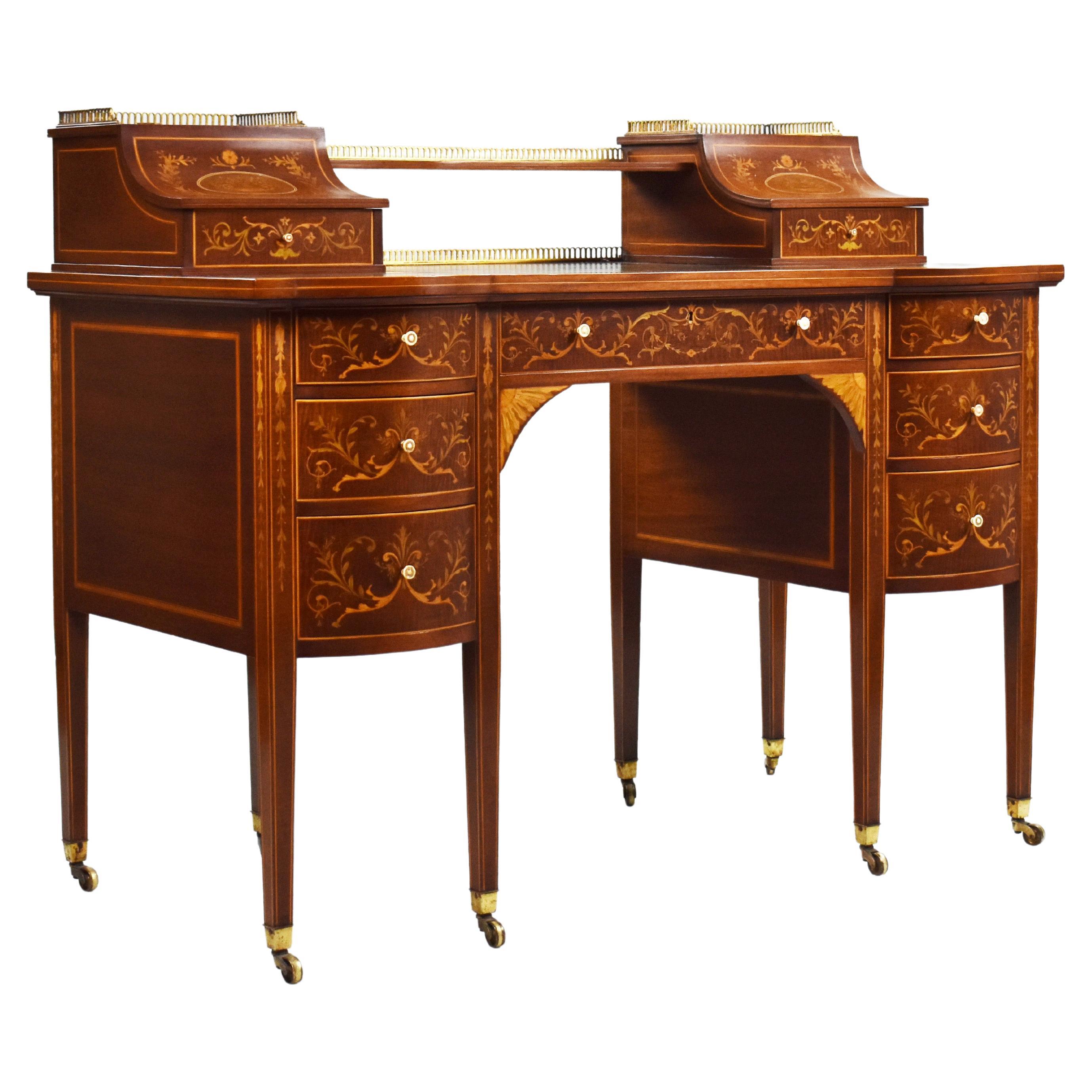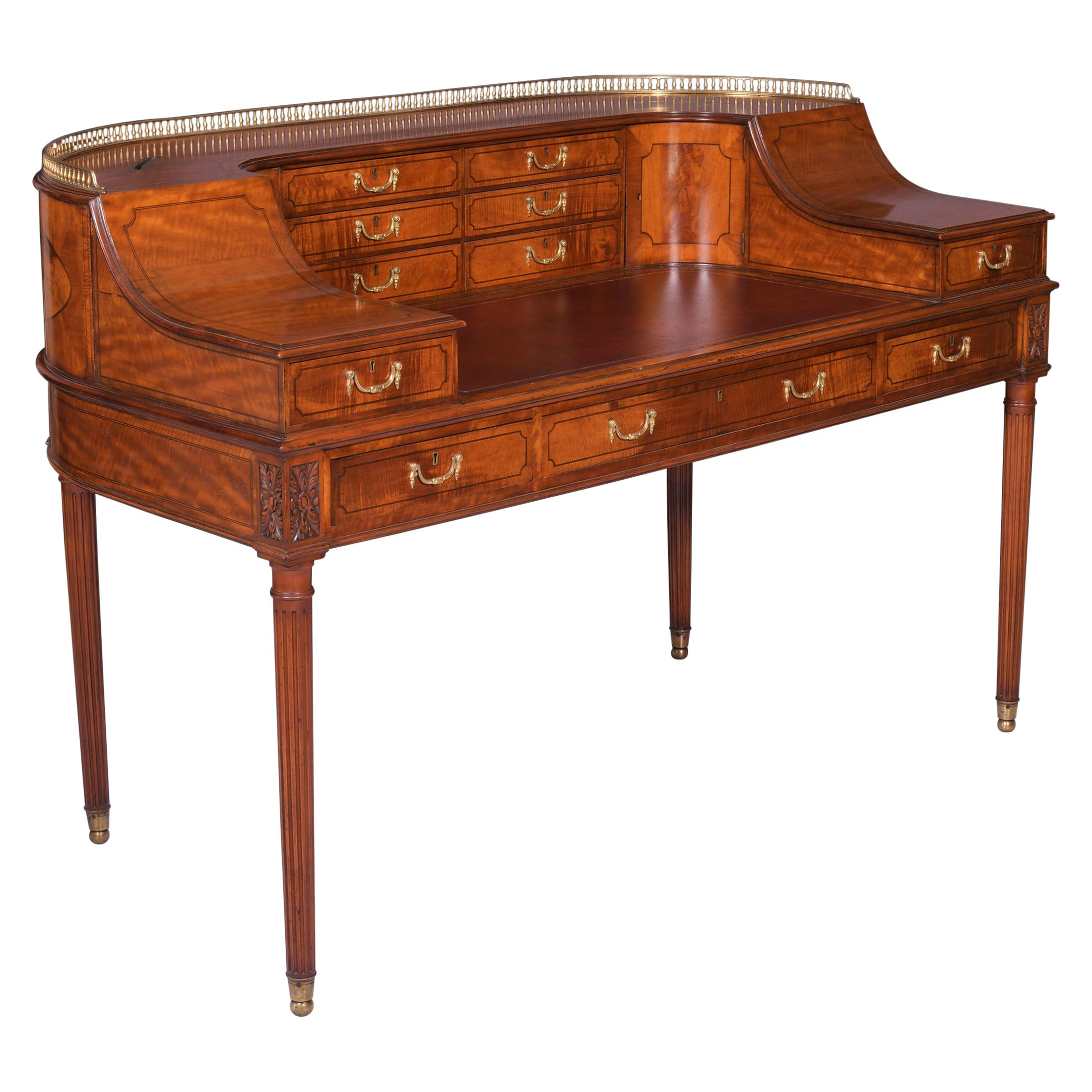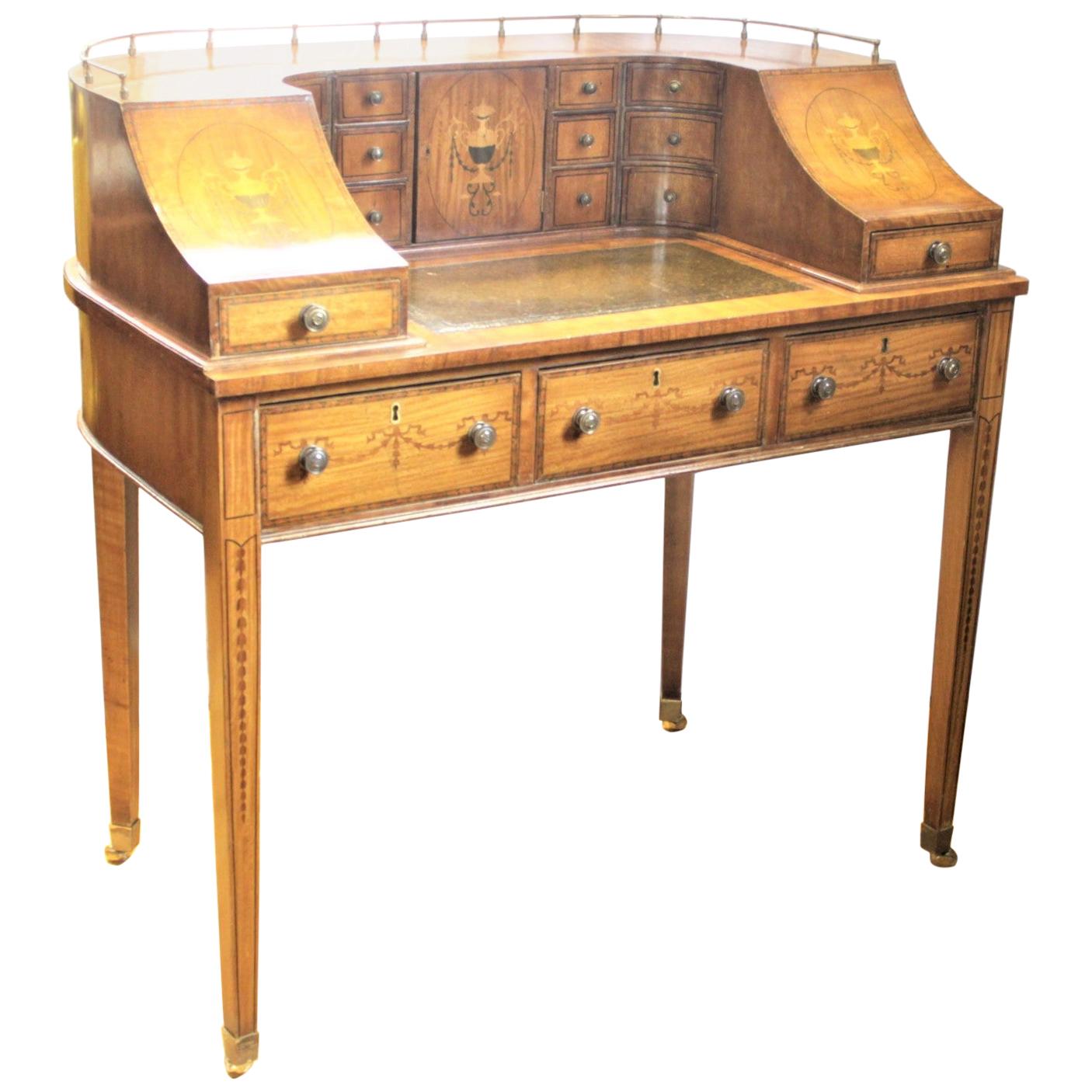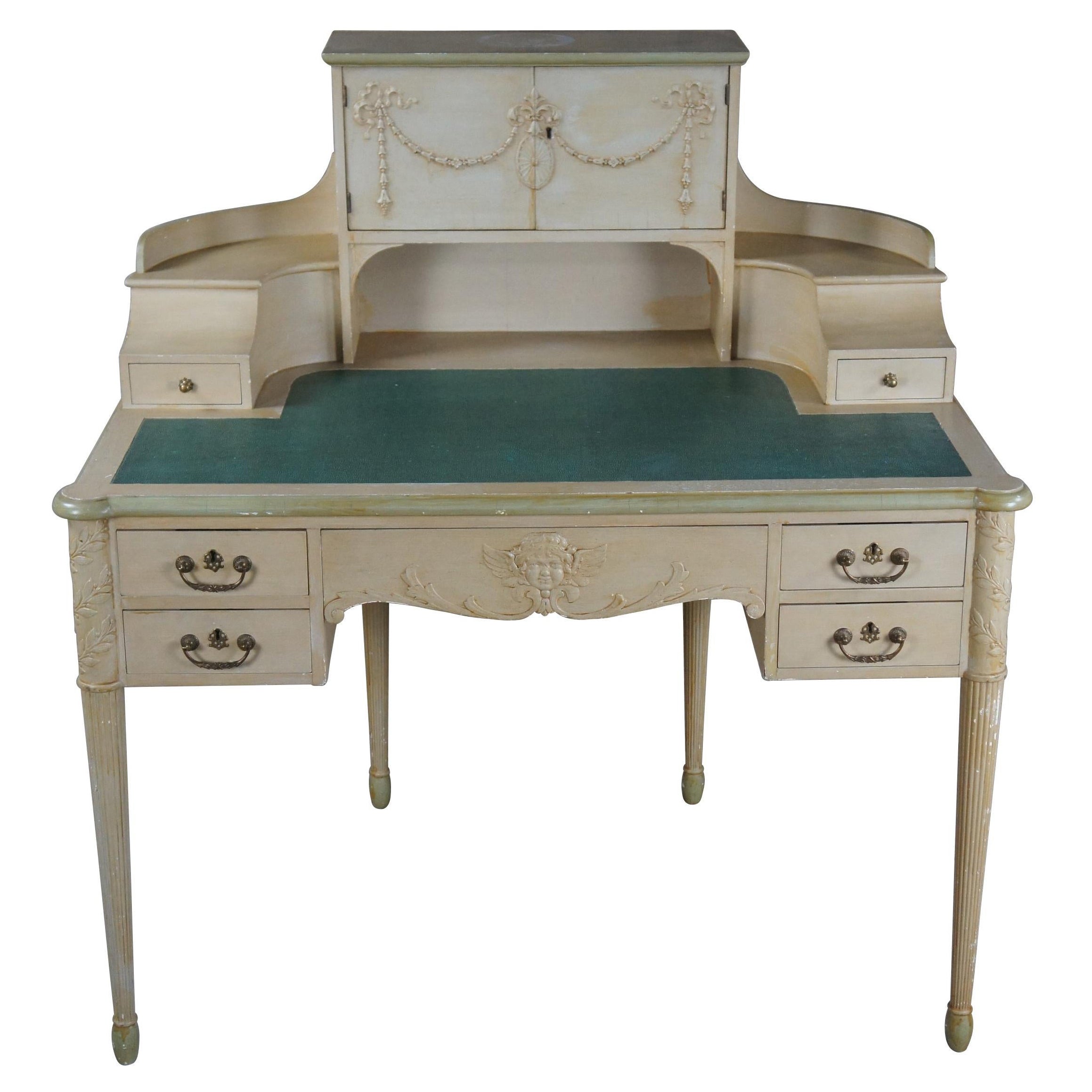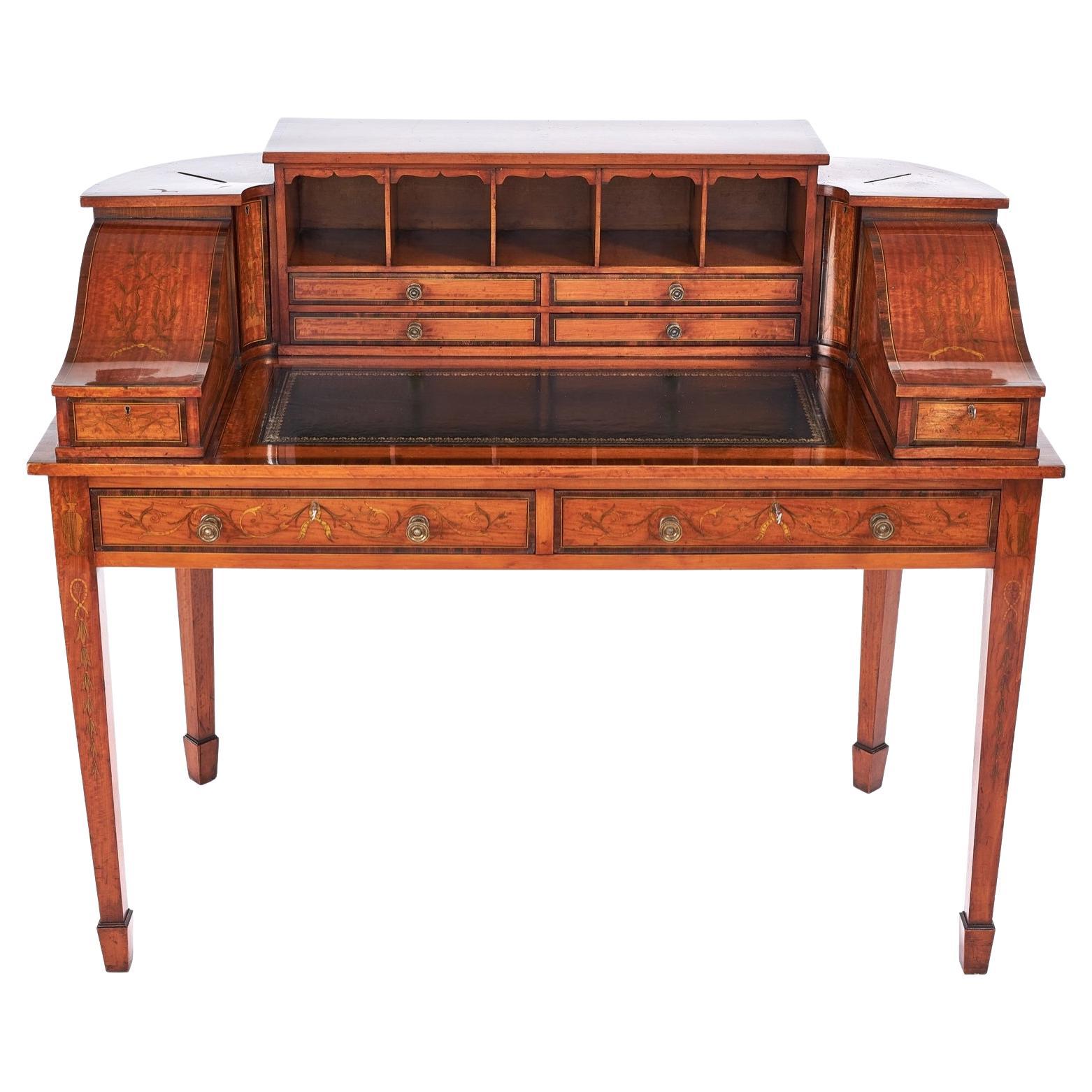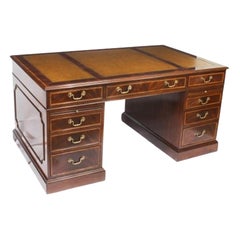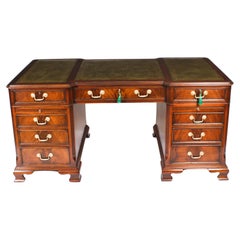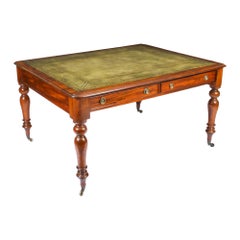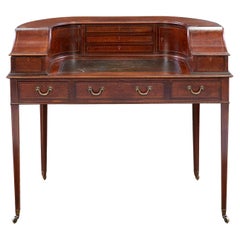
Vintage Satinwood Marquetry Carlton House Writing Desk 20th C
View Similar Items
Want more images or videos?
Request additional images or videos from the seller
1 of 21
Vintage Satinwood Marquetry Carlton House Writing Desk 20th C
About the Item
About the Seller
5.0
Platinum Seller
These expertly vetted sellers are 1stDibs' most experienced sellers and are rated highest by our customers.
Established in 1983
1stDibs seller since 2012
1,209 sales on 1stDibs
Typical response time: 1 hour
Associations
LAPADA - The Association of Arts & Antiques Dealers
More From This SellerView All
- Vintage Flame Mahogany & Crossbanded Pedestal Desk 20th CLocated in London, GBThis is an exquisite Victorian Revival crossbanded flame mahogany desk dating from the late 20th Century. This desk has been beautifully made from ...Category
Vintage 1980s Victorian Desks and Writing Tables
MaterialsBrass
- Vintage Georgian Revival Flame Mahogany Pedestal Desk 20th CenturyLocated in London, GBThis is a stunning vintage Georgian Revival pedestal desk, masterfully crafted in flame mahogany, dating from the mid 20th century. The desk ...Category
Mid-20th Century Desks and Writing Tables
MaterialsMahogany
- Antique Victorian Four Drawer Partners Writing Table Desk 19th CLocated in London, GBThis is a superb antique Victorian partners writing table, crafted from beautiful flame mahogany and dating from Circa 1860. The rectangular top features a moulded edge with an inset faded green and gilt tooled leather writing surface over four drawers, two on on either side. It is raised on four elegant shaped tapering legs that terminate in their original brass castors. It is a partners desk and finished on all sides so that it can stand freely in the middle of a room. Complete with working locks and keys. THE BOTANICAL NAME FOR THE MAHOGANY THIS ITEM IS MADE OF IS SWIETENIA MACROPHYLLA AND THIS TYPE OF MAHOGANY IS NOT SUBJECT TO CITES REGULATION. Condition: In excellent condition having been beautifully cleaned and waxed in our workshops, please see photos for confirmation. Dimensions in cm: Height 76 x Width 143 x Depth 114 Dimensions in inches: Height 2 foot, 6 inches x Width 4 foot, 8 inches x Depth 3 foot, 9 inches A partners desk is an antique desk form, which is basically two pedestal...Category
Antique 1860s English Victorian Desks and Writing Tables
MaterialsLeather, Mahogany
- Antique George III Mahogany Library Writing Table Desk, 18th CenturyLocated in London, GBThis is a fine antique George III mahogany and marquetry library table, circa 1780 in date. The table features beautiful floral and scrolling foliate marquetry throughout, with flame mahogany marquetry panels and gonçalo alves crossbanding. The rectangular top is fitted with the original emerald green gold tooled inset leather writing surface above a pair of crossbanded frieze drawers, raised on square tapered legs. It is freestanding, finished on all sides, so that it can stand freely in the middle of a room, making it extremely suitable for a large home or office. Complete with original brass handles, working locks and keys. THE BOTANICAL NAME FOR THE MAHOGANY THIS ITEM IS MADE OF IS SWIETENIA MACROPHYLLA AND THIS TYPE OF MAHOGANY IS NOT SUBJECT TO CITES REGULATION. Condition: In excellent condition having been beautifully cleaned, polished and waxed in our workshops, and only shows minor signs of wear commensurate with age and use. Please see photos for confirmation. Dimensions in cm: Height 76 x width 144 x depth 84 Dimensions in inches: Height 29.9 x width 56.7 x depth 33.1 Marquetry is decorative artistry where pieces of material (such as wood, pewter or brass silver) of different colours are inserted into surface wood veneer to form intricate patterns such as scrolls or flowers. The technique of veneered marquetry had its inspiration in 16th century Florence. Marquetry elaborated upon Florentine techniques of inlaying solid marble slabs with designs formed of fitted marbles, jaspers and semi-precious stones. This work, called opere di commessi, has medieval parallels in Central Italian "Cosmati"-work of inlaid marble floors, altars and columns. The technique is known in English as pietra dura, for the "hardstones" used: onyx, jasper, cornelian, lapis lazuli and colored marbles. In Florence, the Chapel of the Medici at San Lorenzo is completely covered in a colored marble facing using this demanding jig-sawn technique. Techniques of wood marquetry were developed in Antwerp and other Flemish centers of luxury cabinet-making during the early 16th century. The craft was imported full-blown to France after the mid-seventeenth century, to create furniture of unprecedented luxury being made at the royal manufactory of the Gobelins, charged with providing furnishings to decorate Versailles and the other royal residences of Louis XIV. Early masters of French marquetry were the Fleming Pierre Golle and his son-in-law, André-Charles Boulle, who founded a dynasty of royal and Parisian cabinet-makers (ébénistes) and gave his name to a technique of marquetry employing brass with pewter in arabesque or intricately foliate designs. Flame mahogany Thomas Sheraton - 18th century furniture designer, once characterized mahogany as "best suited to furniture where strength is demanded as well as a wood that works...Category
Antique 1780s English George III Desks and Writing Tables
MaterialsLeather, Mahogany
- Antique Louis Revival Ormolu Bureau Plat Desk Writing Table 19th CLocated in London, GBThis is a gorgeous antique French Louis Revival gilt bronze mounted wood bureau plat, Circa 1860 in date. The rectangular top has a decorative g...Category
Antique 1860s French Desks and Writing Tables
MaterialsOrmolu
- Antique Victorian Walnut Writing Table Desk Hindley & Sons 19th CenturyLocated in London, GBAntique Victorian walnut writing table, circa 1850 in date. One of the drawers is stamped by the maker: C.Hindley & Sons, late Miles & Edwards, 134 Oxford Street, London. It bears the inventory number 12451 The rectangular top features a moulded edge with a striking inset red leather writing surface over two cedar lined drawers to the frieze, fitted with Bramah locks. It is raised on four decorative barley twist legs terminating in brass castors. It is finished on all sides so that it can stand freely in the middle of a room. Complete with working Bramah locks and special key. Condition: In excellent condition, please see photos for confirmation. Dimensions in cm: Height 76 x Width 123 x Depth 69 Dimensions in inches: Height 2 foot, 6 inches x Width 4 foot x Depth 2 foot, 3 inches Hindley, Charles & Sons Berners Street & Oxford Street, London; cabinet makers, upholsterers and retailers (fl.c.1820-1892) Charles Hugh Hindley (b.1792- d.1871) was the son of Christopher, a merchant in Mere, Wiltshire. He moved to London with an elder brother to live with his uncle, who was possibly running the London branch of the Wiltshire business. In 1817 Charles joined the upholstery firm of Benjamin Merriman Nias at 32 Berners Street. Within a few years he bought the Nias business with a £1,000 investment from his family. Despite his business being described as a 'carpet warehouse' in London directories from 1820-1841, by the mid-1830s upholstery and cabinet work had joined his repertoire and he had taken on more showroom space next door at 31 Berners Street. Family records of the 1840s showed that individual custom-order business expanded to also ‘supplying established furnishing houses with goods on wholesale terms’. Jobs ranged from supplying Pentonville Prison with 100 hair mattresses and pillows, to altering spring roller blinds, to fulfilling private commissions with suites of parlour furniture. Hindley was the father of eleven children with three involved in the business: Charles Hugh (b. 1818), Frederick (b. 1820), and Albert Daniel (b.1822). Charles Hugh and Frederick joined the family firm about 1832, thus establishing the family partnership, Charles Hindley & Sons. Albert Daniel learned the carpet manufactory and trade in Kidderminster and eventually established a carpet manufactory in Liversedge, Yorkshire, supplying the family’s London store and others. In 1845 he patented an early tufted carpeting technique. Charles Hindley & Sons acquired the firm, Miles & Edwards in September 1844, including their premises at 134 Oxford Street. Both companies operated from this address until 1845 when Miles & Edwards was closed. The purchase of Miles & Edwards enabled Hindley & Co. to compete with other West End firms by offering everything from cabinet making and upholstery to painted decoration and interior design for the middle and upper class market. In a sample of 737 orders from October 1842-June 1845, six per cent of the clientele were upper and lower aristocracy with approximately seventy per cent gentry or middle class. The aristocratic clientele included the surnames of Hoare, Kirland, Drummond, Montefiore, Ashburton and Rothschild, and the Oriental Club at 18 Hanover Square (1824). Bramah is London's oldest security company. Established at 124 Piccadilly, London in 1784, and today based in Marylebone, London and Romford, Essex. Bramah made their first lock in 1784 and the patent was awarded in 1787. The designer was Joseph Bramah. Joseph Bramah was a leading inventor of the industrial revolution, patenting over 18 new ideas, including a new valve for the water closet (toilet), the hydraulic pump, a fountain pen, and a fire engine. Bramah also introduced a beer hand pump for use at the bar, to prevent fluid loss when barmen went downstairs to pour a new jug! Due to the quality of his manufacturing, his name became a by-word amongst British Engineers for engineering excellence and many of his inventions are on display in the Science Museum in London. You can find one of his original toilets still working in Osborne House, Queen Victoria's home on the Isle of Wight. The Bramah lock was unique and advanced property and valuables protection enormously. Indeed it was 50 years ahead of any Chubb lock...Category
Antique 1850s English Victorian Desks and Writing Tables
MaterialsWalnut
You May Also Like
- Carlton House Writing DeskLocated in Greenwich, CTA Carlton House writing desk in wonderful fiddlegrain mahogany with a D shaped platform surrounded a series of raised drawers and covered co...Category
Antique 1880s English Regency Desks and Writing Tables
MaterialsMahogany
- English Adam Satinwood Carlton House DeskBy Carlton House Fine FurnitureLocated in New York, NY19th century English Adam style satinwood Carlton House design desk with painted floral decorative trim and green leather top.Category
Antique 19th Century English Adam Style Desks and Writing Tables
MaterialsLeather, Satinwood
- Late Victorian Carlton House Desk in SatinwoodLocated in Whaley Bridge, GBSn5033 Exceptional quality Sheraton Revival satinwood and marquetry desk attributed to Edwards and Roberts, having original tooled leather writing surface flanked by two floral inlai...Category
Antique 19th Century English Sheraton Desks and Writing Tables
MaterialsSatinwood
- Late Victorian Freestanding Satinwood Carlton House DeskLocated in Lymington, HampshireA late Victorian freestanding satinwood Carlton House desk, the curved rectangular top with the typical arrangement of six small drawers and a central cupboard around three sides, en...Category
Antique Late 19th Century English Victorian Desks and Writing Tables
MaterialsSatinwood
- 19th Century English Victorian Marquetry Inlaid Carlton House DeskLocated in Chelmsford, EssexFor sale is a top quality Victorian Sheraton revival marquetry inlaid carlton house desk attributed to Edwards & Roberts. The top having to marquetry inlaid boxes...Category
Antique Late 19th Century Desks
MaterialsMahogany
- 19th Century English Satinwood Carlton House Desk Attributed to GillowsBy Gillows of Lancaster & LondonLocated in Dublin, IEAn exceptional 19th century satinwood Carlton House desk attributed to Gillows of Lancaster, the curved superstructure with pierced brass gallery, fitted with two banks of three drawers to the centre, flanked by cupboard doors, the left & right with a document slot above, the reverse inlaid with oval panels, with a gilt tooled burgundy leather writing surface, above three frieze drawers on turned gadrooned and fluted tapering legs with brass caps. Circa 1880 Dimensions: H: 41 1/4 in / 104.8 cm W: 61 in / 154.9 cm D: 32 1/2 in / 82.5 cm Footnote: This particular design of desk owes its name to the one supplied to the Prince of Wales for Carlton House by the court cabinet maker John Kerr in 1790. Its design was later published by George Hepplewhite in 1792 and in 1793 by Thomas Shearer. The publication in Sheraton’s The Cabinet-Maker and Upholsterer's Drawing-Book of several plates illustrating the interiors of Prince George’s recently built palace raised the interest for its interior decoration. Three years later, the name Carlton House desk appears for the first time in the Estimate Sketch Book of Gillow of London and Lancaster. A Gillow’s sketch from 1798 differs slightly from Hepplewhite’s and it is closer in design to the present lot, most noticeably displaying the turned and fluted legs and the pierced brass gallery. The design of this desk similar to known Gillow’s stamped models, the type of construction and the typical square brass handles strengthen an attribution to this firm. Literature: ‘H. Roberts, 'The First Carlton House Table...Category
Antique 19th Century English Georgian Desks and Writing Tables
MaterialsSatinwood
Recently Viewed
View AllMore Ways To Browse
Inlaid Writing Desk
Writing Desk Gold
Vintage Writing
Writing Desks X Legs
Scroll Desk
Desks With 3 Drawers
Large Vintage Desk With Drawers
Desk With3 Drawers
Inlaid Writing Table
Small Work Desk
Small Writing Table With Drawers
Decorate Table Desk
Desk Castors
Floral Desk
Large Vintage Desk
Terminator 2
Inlaid Desks And Writing Tables
Vintage Work Desk
